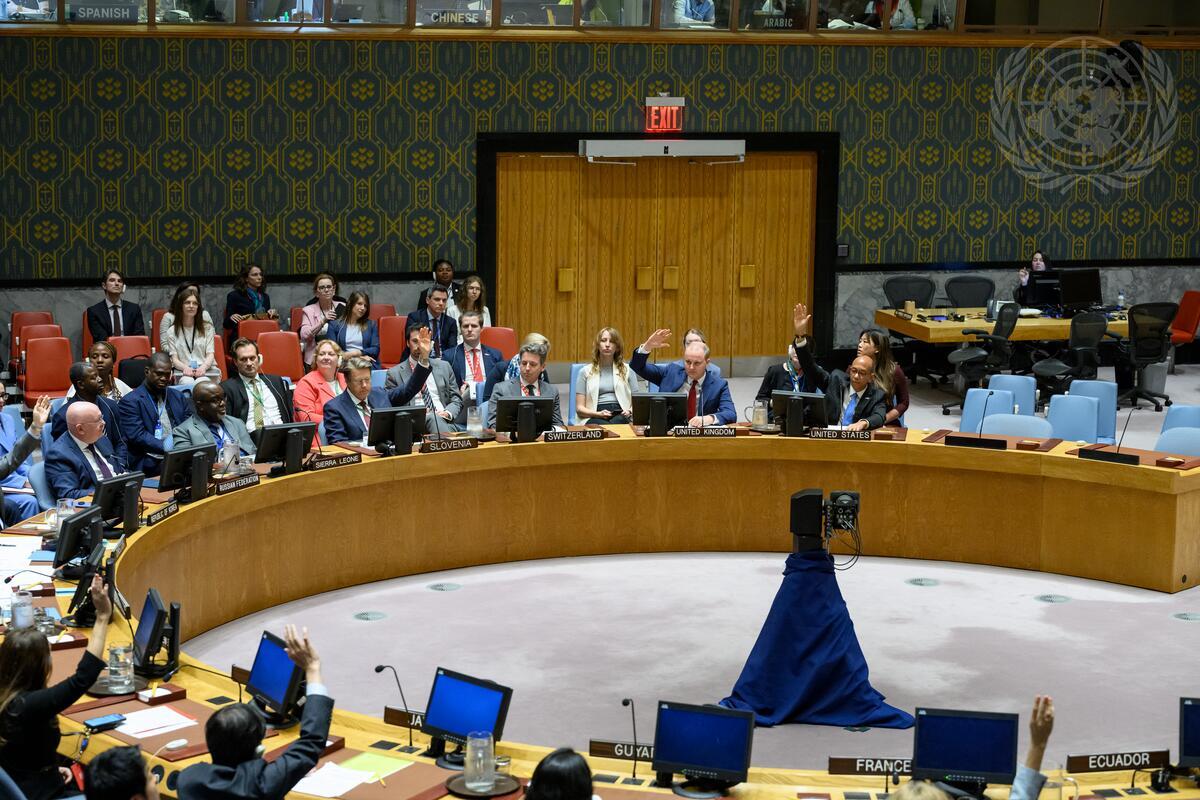At the NATO Summit in Washington last week, leaders noted the rising threats in space. The technology orbiting the Earth is critical to the digital world and underpins both civilian infrastructure and military activities. Yet these space assets are increasingly vulnerable.
Diplomatic tensions between the United States, Russia and China have increased in the space domain, with serious concern surrounding the development of space and counterspace weapons. So-called “grey zone” space operations have also sparked serious concern, which can include jamming or spoofing of satellites, non-kinetic attacks on space assets, cyber operations, unauthorised proximity and rendezvous operations, and satellite stalking.
On 24 April, the UN Security Council voted on its first-ever resolution for outer space. The resolution, jointly introduced by the United States and Japan, sought to affirm the existing obligations in the Outer Space Treaty, which requires parties to not place in orbit around the Earth any objects carrying nuclear weapons or other weapons of mass destruction, or install such weapons on celestial bodies or otherwise station such weapons in outer space.
China and Russia proposed an amendment to the draft resolution extending its application to all types of weapons in outer space and the early elaboration of a legally binding multilateral agreement. When the amendment wasn’t passed, Russia vetoed the US-Japan resolution.
On 20 May, the Security Council then failed to pass a second resolution involving space weapons, this time introduced by Russia. This second resolution mirrored Russia’s earlier proposal to prevent “for all time” the placement, threat or use of any weapons in outer space.

The rivalry and suspicion that led to these failures is long-standing. And the diplomatic divide only seems to be widening. In the NATO summit declaration, leaders expressed “profound” concern over the deepening strategic partnership between Russia and China and their attempts to undercut and reshape the rules-based international order.
Space and counterspace capabilities form a key component in China’s national security and defence strategy. According to the 2024 Space Threat Assessment released by the Center for Strategic and International Studies, China has extensive counterspace capabilities ranging from direct-ascent anti-satellite missile technology and orbital counter space weapons to cyber and electronic warfare targeting capabilities. The US Space Command has expressed concern that China has built an effective “kill web” over the Pacific Ocean to find, fix, track and target US and allied military capabilities.
US concern that Russia is developing a satellite with nuclear weapons-based anti-satellite capability was made public in February by Mike Turner, Chairman of the US House Permanent Select Committee on Intelligence. These concerns date back to the Russian Cosmos 2553 satellite, which was launched in February 2022 into an unusual orbit at the farthest edge of Low Earth Orbit, well above other satellite systems. According to a recent report by Breaking Defence, this raised suspicions that Cosmos 2553 was designed either to spy on ground targets, or that Russia was experimenting with long-term ambient radiation exposure for the future placement of a nuclear anti-satellite weapon.
There is ambiguity about how and to what extent the military laws of targeting apply to such grey zone operations in space.
In May, Russia launched the satellite Cosmos 2576 with an orbital plane that closely matched the US National Reconnaissance Office’s USA 314 spy satellite. The US Ambassador Robert Wood asserted during the recent UN Security Council debate that the Russian Cosmos 2576 satellite is a likely “counterspace weapon, presumably capable of attacking other satellites in low Earth orbit”. In response, Russia has described them as simply “inspector” satellites.
The UN General Assembly passed a resolution in 2022 supporting a moratorium on destructive direct-ascent anti-satellite weapons testing. Many nations, Australia included, subsequently committed to no longer conduct these destructive tests, which cause unpredictable space debris fields with long-lasting challenges. Despite this, tensions regarding the militarisation of space continue to rise. South Korea has just unveiled a laser weapon capability that can target and melt drones with 100 per cent takedown accuracy, being the first nation to operationalise this type of technology. Directed energy weapons can be used to target space assets, with China, Russia, the United States, the United Kingdom, France, India, Turkey, Iran and Japan reported to be investing in the development of these capabilities.
This month, the International Telecommunications Union, a specialised agency of the United Nations, criticised Russia for incidents involving satellite interference. France, the Netherlands, Sweden, Luxembourg and Ukraine alleged that Russia has jammed GPS signals, jeopardised air traffic control and interrupted national TV channels to broadcast content promoting its war in Ukraine. NATO also pointed to sustained malicious cyber and hybrid activities by China and has called on Beijing to support international efforts to promote responsible space behaviour.
There is ambiguity about how and to what extent the military laws of targeting apply to such grey zone operations in space. That is, when are such activities considered a use of force, thus crossing the threshold into a conventional military armed conflict? This poses a serious governance challenge and will fuel potential misperceptions and confrontations.
In an evolving and complex space security environment, there is a need for clarity on the threshold of armed conflict. However, there has been little progress on establishing new international law to prevent an arms race in outer space. With the increasingly divergent views between China, Russia and the United States on space governance, diplomacy is vital to ensure the stability and security of the space domain. The continued peaceful use of outer space is at stake.

